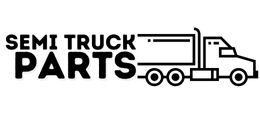Mastering Level Towing Reduce Truck Squat with Air Bags
Introduction
Truck owners often face the challenge of maintaining stability and control while towing heavy loads. One common issue that arises is truck squat, where the rear end of the truck dips down due to the weight of the payload. This phenomenon not only affects the vehicle’s aesthetics but also poses significant safety risks on the road.
In this comprehensive guide, we delve into the world of truck squat and explore practical solutions to achieve level towing. Understanding the root causes and implications of truck squat is crucial for any truck owner looking to enhance their towing experience.
Throughout the following chapters, we’ll examine the role of air bags in combating truck squat, the benefits of towing with a level truck, different types of air bag systems available, installation procedures, maintenance tips, and much more.
Join us on this journey as we equip you with the knowledge and tools necessary to conquer truck squat and unlock the full potential of your towing capabilities. Whether you’re a seasoned truck enthusiast or a novice in the world of towing, this guide will empower you to tow with confidence and safety. Let’s embark on this adventure together and elevate your towing game to new heights.
Understanding Truck Squat
Truck squat, though common, is a phenomenon that demands deeper comprehension. At its core, it’s the tilting of a truck’s rear end when loaded, influencing not only aesthetics but also safety and performance. Understanding the mechanisms behind truck squat is crucial for mitigating its effects and ensuring safer towing experiences.
Various factors contribute to truck squat, including payload weight, hitch placement, and suspension design. The physics are simple: when a heavy load is placed on the bed or hitch of a truck, it causes the rear suspension to compress, resulting in the rear end dipping down. This alters the vehicle’s center of gravity, potentially leading to instability, reduced traction, and compromised braking efficiency.
Recognizing the signs of truck squat is the first step towards addressing the issue. Visual cues such as a noticeable downward angle of the rear end or headlights pointing upward can indicate excessive squat. Additionally, drivers may experience changes in steering responsiveness and overall vehicle handling.
By understanding the mechanics and indicators of truck squat, truck owners can proactively implement measures to mitigate its effects. In the subsequent chapters, we’ll explore solutions such as air bag systems that offer customizable support to maintain proper ride height and achieve level towing. Stay tuned as we delve deeper into the realm of truck squat and uncover effective strategies for achieving safer and more stable towing experiences.
The Role of Air Bags
In the quest to conquer truck squat and achieve level towing, air bags emerge as a pivotal solution. These ingenious devices play a crucial role in supporting heavy loads and restoring proper ride height, thereby mitigating the effects of truck squat.
Air bags, also known as air springs or air suspension systems, function as flexible cushions within the truck’s suspension system. Unlike traditional coil or leaf springs, air bags utilize compressed air to provide adjustable support. When the truck is loaded, the air bags inflate to compensate for the added weight, maintaining a level stance and preventing excessive squat.
The versatility of air bags lies in their ability to adapt to varying loads and road conditions. With adjustable air pressure, truck owners can fine-tune the level of support provided by the air bags, ensuring optimal ride quality and stability under different towing scenarios.
Furthermore, air bag systems offer added benefits beyond addressing truck squat. They can improve overall ride comfort, reduce body roll, and enhance vehicle stability, especially when towing heavy trailers or hauling significant payloads.
In the subsequent chapters, we’ll delve deeper into the different types of air bag systems available, their installation processes, and maintenance requirements. By understanding the role of air bags in combating truck squat, truck owners can make informed decisions to enhance their towing experience and ensure safer travels on the road.
Benefits of Level Towing
Achieving level towing isn’t just about aesthetics; it’s a fundamental aspect of ensuring safety, stability, and overall vehicle performance. In this chapter, we’ll explore the myriad benefits of towing with a level truck and why it’s essential for every truck owner.
- Improved Handling: A level truck distributes weight more evenly between the front and rear axles, resulting in better handling and responsiveness. This translates to greater control and maneuverability, especially when navigating winding roads or adverse weather conditions.
- Enhanced Braking Performance: Proper weight distribution helps optimize braking efficiency, reducing stopping distances and minimizing the risk of brake fade. With a level truck, drivers can confidently apply brakes knowing that the vehicle will respond predictably and effectively.
- Reduced Wear and Tear: Excessive truck squat can place undue stress on suspension components, tires, and drivetrain systems. By maintaining a level towing posture, truck owners can mitigate wear and tear on these critical parts, extending their lifespan and reducing maintenance costs over time.
- Improved Stability: A level truck is inherently more stable, especially when towing heavy trailers or traversing uneven terrain. This stability enhances safety for both the driver and other road users, reducing the risk of swaying, fishtailing, or rollover accidents.
- Optimized Fuel Efficiency: Uneven weight distribution can increase aerodynamic drag and fuel consumption. By towing with a level truck, drivers can optimize fuel efficiency and potentially save money on fuel expenses during long hauls or frequent towing operations.
In summary, the benefits of towing with a level truck are far-reaching, encompassing safety, performance, and cost-effectiveness. In the following chapters, we’ll delve into practical solutions for achieving level towing, with a focus on the role of air bags in reducing truck squat and enhancing towing stability.
Types of Air Bag Systems
When it comes to addressing truck squat and achieving level towing, various air bag systems are available to suit different preferences and towing requirements. In this chapter, we’ll explore the different types of air bag systems, their features, and suitability for various towing applications.
- Manual Air Bag Systems:
Manual air bag systems require the driver to adjust air pressure manually using a compressor or inflation valves. While they offer simplicity and affordability, manual systems may lack the convenience of automatic adjustment and require more frequent monitoring to maintain optimal air pressure. - Semi-Automatic Air Bag Systems:
Semi-automatic air bag systems feature preset air pressure settings that can be adjusted manually but also include automatic leveling capabilities. These systems offer a balance between user control and automated functionality, providing convenience while allowing for customization based on load requirements. - Automatic Air Bag Systems:
Automatic air bag systems utilize sensors and onboard controls to continuously monitor vehicle load and adjust air pressure automatically. These systems offer hands-free operation, ensuring that the truck maintains a level stance without requiring manual intervention from the driver. Automatic systems are ideal for drivers seeking maximum convenience and precision in maintaining proper ride height during towing. - Adjustable Damping Systems:
Some advanced air bag systems incorporate adjustable damping technology, allowing for fine-tuning of suspension stiffness and damping characteristics. This feature can enhance ride comfort and stability by adapting to different road conditions and load dynamics. - Integrated Air Bag and Suspension Systems:
Integrated air bag and suspension systems combine air bags with specialized suspension components, such as adjustable shocks or sway bars, to provide comprehensive control over ride height, damping, and stability. These systems offer superior performance and versatility, making them suitable for demanding towing applications and off-road adventures.
By understanding the characteristics and capabilities of different air bag systems, truck owners can choose the option that best fits their towing needs and preferences. In the following chapters, we’ll explore the installation process, maintenance requirements, and practical considerations for implementing air bag systems to achieve level towing.
Installation Process
Installing air bag systems is a practical solution for reducing truck squat and achieving level towing. In this chapter, we’ll guide you through the step-by-step installation process, ensuring that you have the knowledge and tools necessary to equip your truck with air bags effectively.
- Gather Necessary Tools and Materials:
Before beginning the installation, gather the required tools and materials, including the air bag kit, mounting hardware, wrenches, sockets, and an air compressor if applicable. Ensure that you have a clean and well-lit workspace to work comfortably. - Prepare the Vehicle:
Park the truck on a level surface and engage the parking brake. Disconnect the negative battery cable to prevent electrical accidents. Assess the suspension components and ensure that they are in good condition before proceeding with the installation. - Install Mounting Brackets:
Follow the manufacturer’s instructions to install the mounting brackets for the air bags. Depending on the design of your truck’s suspension, this may involve bolting the brackets onto the frame or axle using provided hardware. - Mount Air Bags:
Attach the air bags to the mounting brackets using the supplied fasteners. Ensure that the air bags are positioned securely and oriented correctly according to the manufacturer’s guidelines. - Connect Air Lines and Fittings:
Install the air lines and fittings according to the recommended routing and connection points. Use zip ties or mounting clips to secure the air lines and prevent them from rubbing against sharp edges or moving parts. - Test System and Adjust Air Pressure:
Once the installation is complete, reconnect the battery and test the air bag system for leaks and proper operation. Inflate the air bags to the recommended pressure using a suitable air compressor or inflation device, and adjust as needed to achieve the desired ride height. - Final Checks and Adjustments:
Conduct a thorough inspection of the installation to ensure that all components are securely fastened and properly aligned. Test the truck’s suspension by simulating different load conditions and verify that the air bags respond accordingly.
By following these installation steps meticulously and adhering to manufacturer guidelines, you can equip your truck with air bags confidently, paving the way for safer, more stable towing experiences. In the next chapter, we’ll delve into essential maintenance tips to ensure the longevity and optimal performance of your air bag system.
Maintenance and Care
Maintaining and caring for your air bag system is essential to ensure optimal performance and longevity. In this chapter, we’ll discuss the importance of regular maintenance and provide practical tips for keeping your air bag system in top condition.
- Inspect Regularly:
Schedule regular inspections of your air bag system to check for signs of wear, damage, or leaks. Pay attention to air lines, fittings, mounting hardware, and the condition of the air bags themselves. - Clean Air Bags and Components:
Keep air bags and associated components clean to prevent debris buildup and potential damage. Use a mild detergent and water solution to gently clean the exterior surfaces, avoiding harsh chemicals that could degrade the materials. - Check Air Pressure:
Monitor air pressure in the air bags regularly, especially before embarking on towing journeys or carrying heavy loads. Inflate the air bags to the recommended pressure specified by the manufacturer to ensure proper support and ride height. - Inspect Mounting Hardware:
Periodically inspect mounting brackets, bolts, and other hardware to ensure they remain tight and secure. Loose or damaged hardware can compromise the stability and effectiveness of the air bag system. - Inspect for Leaks:
Conduct leak tests on the air bag system using soapy water or a commercial leak detection solution. Apply the solution to air line connections, fittings, and air bags while the system is pressurized, and observe for bubbles indicating leaks. - Address Issues Promptly:
If any issues or abnormalities are detected during inspections, address them promptly to prevent further damage or safety hazards. Consult the manufacturer’s guidelines or seek professional assistance if needed to diagnose and resolve problems effectively. - Follow Manufacturer Recommendations:
Adhere to the maintenance recommendations provided by the manufacturer of your air bag system. This may include specific maintenance intervals, lubrication procedures, and recommended replacement parts.
By following these maintenance tips diligently and staying proactive in caring for your air bag system, you can ensure reliable performance and extend the lifespan of your investment. In the final chapter, we’ll conclude our guide on reducing truck squat with air bags and summarize key takeaways for achieving level towing.
Conclusion
In the journey to conquer truck squat and achieve level towing, air bags emerge as indispensable allies. Throughout this guide, we’ve explored the nuances of truck squat, the role of air bags in mitigating its effects, and practical strategies for installing and maintaining air bag systems.
By understanding the importance of maintaining a level towing posture, truck owners can unlock a multitude of benefits, including improved handling, enhanced braking performance, and reduced wear and tear on vehicle components. With the versatility and adjustability offered by air bag systems, achieving level towing is within reach for drivers of all backgrounds and towing requirements.
As we conclude our exploration, it’s essential to emphasize the significance of regular maintenance and care in preserving the performance and longevity of air bag systems. By following manufacturer recommendations and staying proactive in monitoring and addressing potential issues, truck owners can ensure the continued reliability and safety of their towing setups.
In closing, we invite you to embark on your towing adventures with confidence and peace of mind, knowing that you’re equipped with the knowledge and tools necessary to conquer truck squat and achieve safer, more stable towing experiences. Thank you for joining us on this journey, and may your travels be filled with smooth roads and level horizons.
For detailed information, you can contact us at Air Bags


